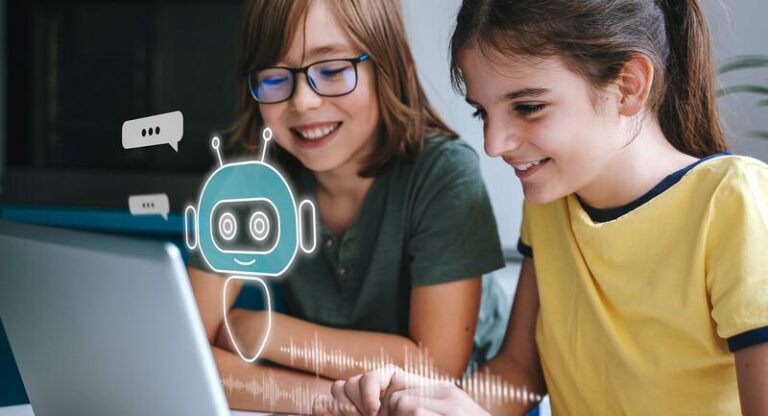In today’s rapidly evolving digital landscape, video-based learning has become one of the most powerful and scalable approaches to education. Yet, despite its popularity, keeping students actively engaged with video content remains a significant challenge. This is where artificial intelligence (AI) steps in to transform the learning experience. Through personalized content, interactive features, and real-time feedback, AI is reshaping how learners consume and connect with educational videos.
Whether you’re an educator, instructional designer, or e-learning platform developer, incorporating AI into your video learning strategy can significantly boost student engagement and learning effectiveness.
In this article, we’ll uncover 7 practical ways educators can leverage AI to enhance engagement in video-based learning, supported by real-world examples and answers to common questions. We’ll also explore how you can easily create AI-powered quiz tests to assess learner comprehension and interaction.
1. AI-Powered Video Summarization
Long videos can often lead to cognitive overload. AI tools can now generate smart video summaries that highlight key concepts, helping learners quickly review or preview content. This is especially helpful for exam revision or students with limited time.
Example:
Platforms like Synthesia or Lumen5 use AI to generate short, digestible clips from longer lessons, allowing students to get an overview before diving deeper.
2. Personalized Learning Paths
AI can analyze learner data to recommend the most relevant videos, topics, or modules based on previous performance, learning speed, or interests. This level of customization ensures that learners stay engaged with content that is tailored to their needs.
Example:
Platforms such as Coursera and Khan Academy use machine learning algorithms to offer personalized video recommendations and exercises.
3. Interactive Video Quizzing
Instead of passive viewing, AI can embed real-time quizzes or polls within videos. These smart assessments not only test knowledge but also adapt to student responses, providing hints or redirecting them to relevant content.
Example:
Edpuzzle and PlayPosit allow educators to insert quizzes into videos, while AI evaluates patterns of incorrect responses and suggests targeted revision.
4. Speech-to-Text & Language Translation
AI-driven transcription tools can convert speech into text, making videos more accessible to learners with hearing impairments or those who prefer reading. Additionally, real-time translation opens up content to global learners, breaking language barriers.
Example:
YouTube’s auto-captioning and tools like Descript offer multilingual subtitles, while AI voice assistants can even provide instant explanations in the viewer’s native language.
5. Emotion and Engagement Analytics
AI algorithms can now analyze facial expressions, eye movement, and engagement levels in real-time (with consent) to gauge how students are interacting with the video content. Educators receive insights to modify content for better results.
Example:
Platforms like GoReact and Nestor monitor student engagement metrics and provide educators with detailed reports on attentiveness and comprehension.
6. AI-Powered Chatbots and Virtual Tutors
During video sessions, AI-powered chatbots can answer students’ questions, clarify doubts, or provide additional resources, making the experience more interactive without needing a live instructor.
Example:
Socratic by Google and Duolingo’s AI tutor use natural language processing to simulate tutor-student conversations and solve complex doubts instantly.
7. Video Content Creation with AI
Educators can use AI tools to generate engaging video content quickly—from animations to avatars that can narrate lessons in different tones, styles, or languages. This democratizes content creation and ensures consistent quality.
Example:
Pictory and Synthesia allow teachers to turn text-based lessons into AI-generated videos using customizable characters and backgrounds.
Real-World Impact: A Case Study
A public school in Texas implemented an AI-based video learning platform for their middle school science curriculum. After three months, student engagement scores increased by 38%, and 64% of students reported better comprehension. Teachers were also able to track student progress more effectively and intervene early when needed.
FAQs: Revolutionizing Video Learning with AI
1. Is AI expensive to implement in education?
While some AI tools come with a cost, many affordable or even free platforms are available for educators and institutions. Tools like ChatGPT, Edpuzzle, or even Google tools can be integrated at minimal cost.
2. Will AI replace teachers in video-based learning?
No. AI is a tool to enhance the learning process, not replace educators. Teachers provide the human touch, critical thinking, and empathy that AI cannot replicate.
3. How can I get started with AI in my classroom?
Start small. Use platforms like Edpuzzle for video quizzes or ChatGPT for lesson planning. Gradually explore advanced tools as you become comfortable.
4. Are there privacy concerns with AI tracking student engagement?
Yes, it’s crucial to use platforms that comply with data privacy laws like FERPA, GDPR, or COPPA, and always get consent from students or parents before collecting behavioral data.
5. What skills do educators need to use AI tools effectively?
Basic digital literacy, an openness to learning new tools, and an understanding of how to evaluate AI recommendations are enough to start. Most AI platforms are user-friendly and require minimal technical expertise.
6. Can AI help students with learning disabilities?
Absolutely. AI tools can provide personalized pacing, alternative content formats (text-to-speech, simplified language), and real-time feedback to support neurodiverse learners or those with dyslexia, ADHD, or auditory processing disorders.
Final Thoughts
AI isn’t just a buzzword in education—it’s actively transforming how video-based learning is created, delivered, and experienced. By adopting AI tools, educators can foster a more engaging, personalized, and inclusive learning environment.
As the education landscape continues to evolve, combining the power of AI with video learning offers an exciting opportunity to revolutionize classrooms—whether physical or virtual.

